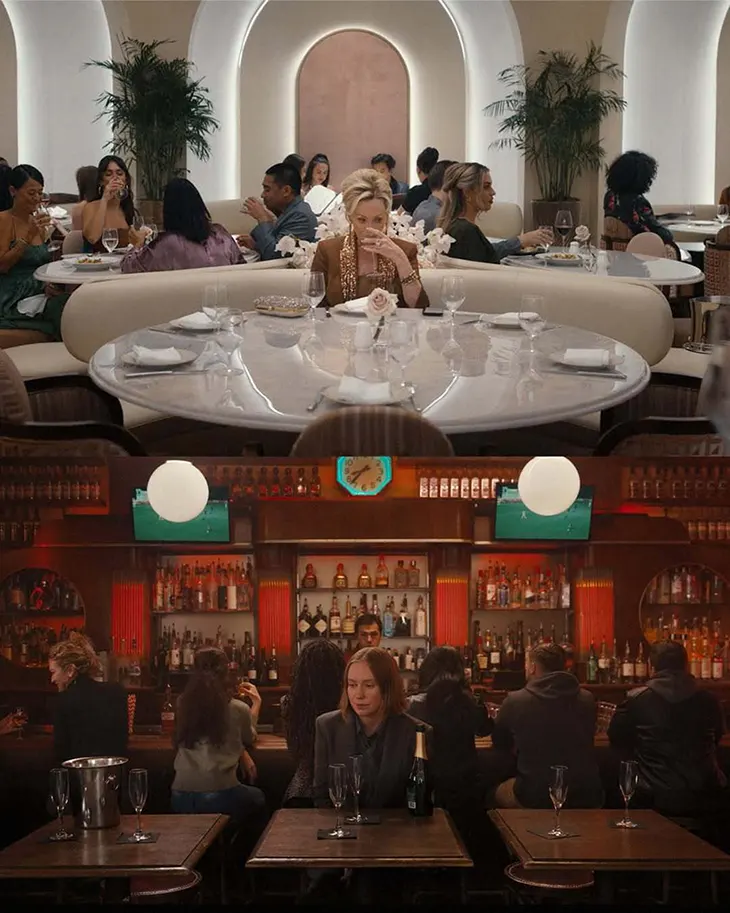
For its fourth season, Hacks on MAX takes a bold step as Deborah Vance, played by Jean Smart, becomes the first female Late Night Show host. This milestone demanded a transformative vision from production designer Rob Tokarz, whose work brings Deborah’s world to life with remarkable detail and ingenuity. From the Art Deco-inspired late-night stage that echoes the grandeur of Los Angeles architecture to backstage spaces that reflect Deborah’s journey and duality, Rob’s designs are as much a part of the storytelling as the dialogue itself.
In this exclusive DSCENE Magazine interview, Zarko Davinic speaks with Rob about the creative challenges and triumphs of Season 4. They discuss everything from crafting the iconic late-night stage to adapting single spaces into multiple distinctive locations, all while navigating real-world challenges like the aftermath of the LA fires. Rob also shares insights into the evolving role of production design in Hollywood and how subtle details can elevate comedy. This conversation offers a rare glimpse into the behind scenes one of television’s most visually compelling comedies.
Hacks Season 4 introduces Deborah as the first female Late Night Show host. Can you walk us through your creative process for designing the late-night show stage, from the Art Deco inspiration to the nods to Deborah’s journey? – When I started designing Late Night with Deborah Vance, I wanted it to feel like the peak of her journey—everything we’d seen before leading to this moment. I began sketching ideas at the end of Season 3, knowing this set was coming. Over the hiatus, I tested concepts to see what would evolve and what would stick. The goal was to give Late Night the full Deborah Vance treatment while honoring the institution of late night itself.
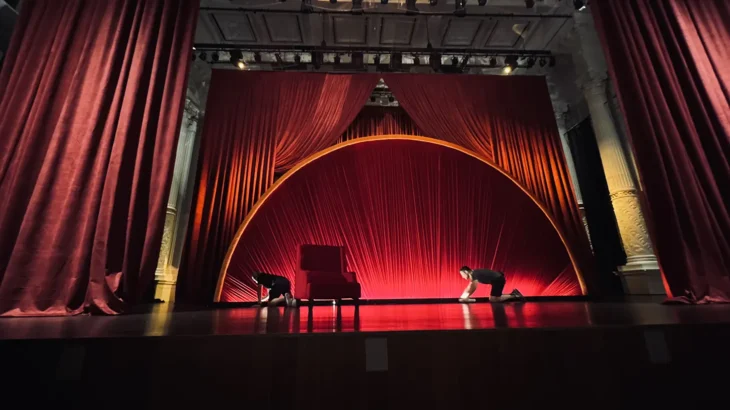


We first grounded the set in the traditional language of late night: the desk, the curtain, the band area—all the familiar benchmarks the audience expects. But from there, every design decision had to feel true to Deborah. I’ve always felt that Deb and Deco go together perfectly, but this time I wanted it to feel distinctly Los Angeles. I pulled inspiration from the Griffith Observatory for the finishes on the columns and the Eastern Building downtown for the band shell, aiming for a sense of monumentality in the structural elements.
At the same time, we wanted to layer in Deborah’s personal history. The columns subtly echo the curves of her Season 2 tour bus. The chevron fl ooring nods to both her bus and her Las Vegas mansion. The star drop recalls her residency at the Palmetto in Season 1. We buried easter eggs throughout the set—mapping her journey from Las Vegas to Los Angeles in silhouettes, using header arch details inspired by Johnny Carson’s Burbank set from the 1970s, and tipping to the marquee lights of Fremont Street above and behind her.
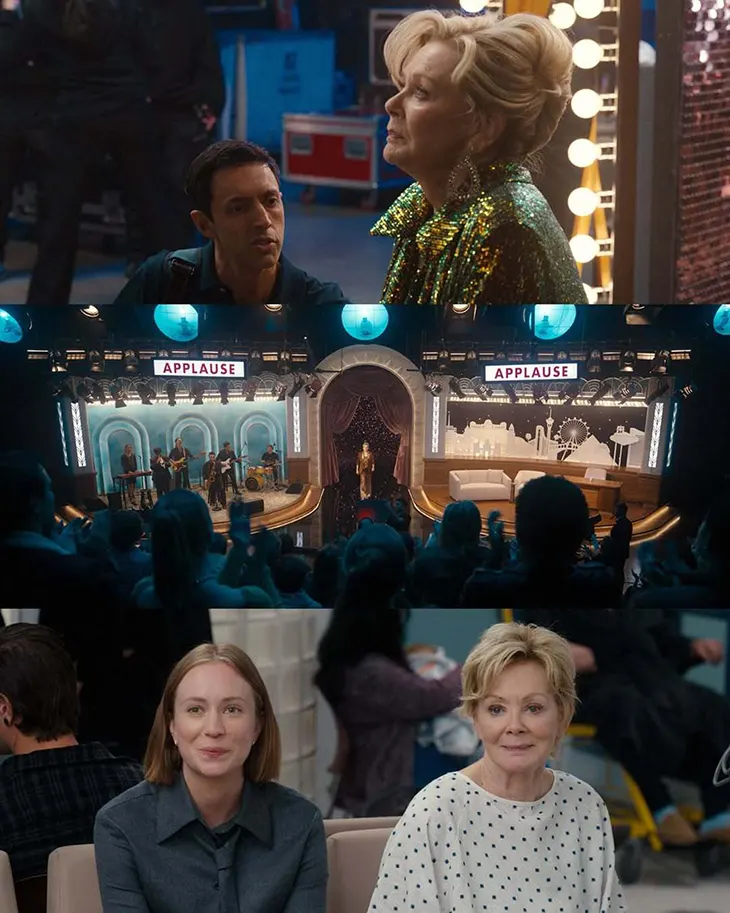
Every material—from the wood, to the marlite, to the smoky pink velvet curtain and sequins—was chosen to place us squarely in the world of late-night glamour, but fi ltered through Deborah’s unique fl air. It had to feel iconic. Earned. Hers.
Time progression plays a significant role this season, with elements like evolving dressing rooms and changing signage. How did you and your team approach these subtle yet impactful details to reflect the arc of production? – As much as we were able to with a tight production schedule, we wanted the show to have the feel of the slog a season is, and particularly how daunting creating a nightly show would be. As the season ramped up, the interior production spaces needed to reflect that momentum—work piling up, energy shifting, the world getting messier in a very real way. That evolution wouldn’t have been possible without Jen Lukehart and her team. They were essential in tracking and executing those changes with precision and care, often with very little turnaround time.
One of the reasons Hacks works so well is our commitment to staying grounded in the reality of our characters. We never tip the joke or overplay it—the world always feels real. But when we get the chance to build a one-off or “swing” set, we get to stretch. These sets pull the characters out of their routine environments, and we love leaning into the unique tone they bring
Ava’s office is a great example. We shot it over a very short window, but it had to feel increasingly chaotic—as if her job was physically taking over her space. Jen’s team layered in clutter, personality, and fatigue in a way that felt honest. Through conversations with our show-runners, real-life reference, and lived experience, we honed in on what felt grounded and right. Backstage evolved too—we added subtle buildup over time: past scenery tucked away, signs of a show mid-run. Even on the Late Night stage, which didn’t change dramatically, we tracked details like the condition of the marlite floor and the version of the desk panel, before or after it was sawed. The desk was designed to accommodate that switch seamlessly.

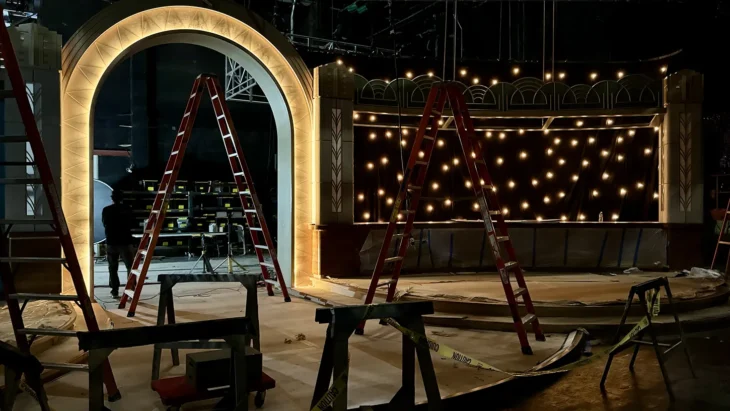

Some elements stayed in flux throughout the season—like the skyline behind Deborah’s desk. We worked hand-in-hand with lighting and camera to keep refining the silhouettes and surface treatments of those buildings so they looked their best on screen. It was all about coordination, layering, and the kind of design teamwork that’s invisible when it’s working well.
You had to transform spaces into multiple distinctive locations, such as Ava’s Office, Writer’s Bullpen, and more. What were the biggest challenges in achieving this versatility, and how did you overcome them? – The biggest challenge in converting a single set into multiple locations is time. TV schedules are relentless, and we often had just a day or two for full changeovers. What worked in our favor was that four out of the five sets shared enough structural detail that we could limit our changes to the most visually impactful elements—making transformation possible within tight windows.
Transitioning from Ava’s Office to Rob’s required a repaint, redressing, and modifying the hallway to match our actual production office corridors. Rob’s space needed to feel like it belonged to a seasoned producer—settled and lived-in. When we flipped it into the Writer’s Bullpen, we expanded one wall, swapped the exterior-facing windows to match those at CBS Television City, used for our exteriors, and fully redressed the room with specific character touches. Jen Lukehart reached out to each actor to get a sense of how they saw their character, and incorporated those details into the dressing. The conference room required another full reset—moving walls, repainting, and grounding it in the familiar look of a real production meeting space while still tying into our visual world.
Our final version was a total departure. The attorney’s office needed to scream “shady strip mall lawyer.” This was a three-wall set rebuilt around two diamond-mullioned windows we sourced from our asset warehouse. We installed wood paneling and aged everything down—hard. It leans broad and instantly comic, which made it one of those rare sets we love getting to do. Jen did an incredible job—it looked exactly like how kitty litter smells.
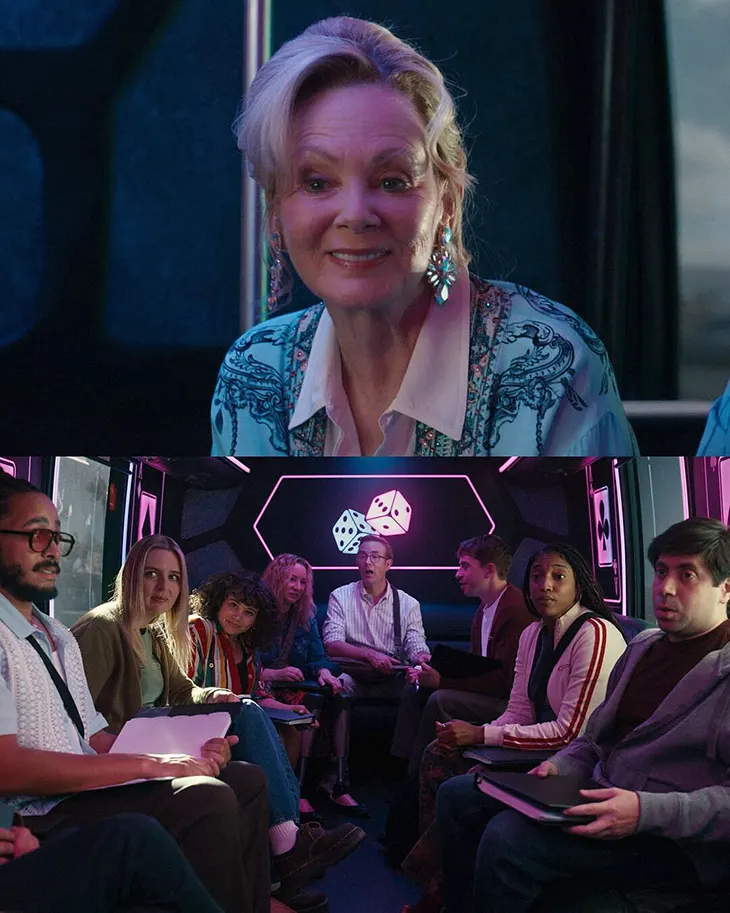
Deborah smashing the kitchen with a hammer was a standout scene. Can you tell us how you created the fake countertops and layers to achieve this without damaging the real kitchen? – When you read a scene like this in a script, you immediately flag it as a problem-solving opportunity. My first thought was, “We’re going to have to build this kitchen on stage.” The reality? We weren’t. Instead, we had to find a way to pull it off on location—in Deb’s L.A. mansion, no less, where the homeowners are highly protective of the property’s historical integrity. That meant strict boundaries around what we could and couldn’t touch.
There’s nothing quite like watching a gag land perfectly. It’s one of the most satisfying moments in production design.
The specifics of what got smashed didn’t come from the script—they came from what was physically and logistically possible. In the end, we essentially built a set on top of a set. We created custom flats that mimicked original lathe and plaster, built to shatter convincingly. The shelf that breaks was mounted on one of those flats. The countertop was a butcher block overlay—longer and wider than the original—designed to take sledgehammer hits. We constructed the slats hollow and filled them with sawdust and debris so they’d break in a more cinematic way.
Our tile wall was another layer: we used bisque-fired tiles, which shatter more easily, mounted on a flat built to match the real tile and again backed with faux lathe and plaster. The goal was for the destruction to feel tactile, messy, and real.
Jeanine Ringer, my Art Director, collaborated closely with our Construction team to research, prototype, and refine each element. We tested every piece individually, made tweaks, and eventually staged a full run-through on our stage. We mocked up the set to match the real kitchen and had Jean run the gag for Lucia, Paul, and Jen. In the end, we nailed it—all in one take—with a rubber sledgehammer.
There’s nothing quite like watching a gag land perfectly. It’s one of the most satisfying moments in production design.

Comedy often lives in the details. Could you share some of the hidden design elements or subtle touches you added across Season 4 to emphasize the humor? – One of the reasons Hacks works so well is our commitment to staying grounded in the reality of our characters. We never tip the joke or overplay it—the world always feels real. But when we get the chance to build a one-off or “swing” set, we get to stretch. These sets pull the characters out of their routine environments, and we love leaning into the unique tone they bring.
Late Night gave us a few great swings this season. The palanquin was one—equal parts spectacle and problem-solving. It had to look like it belonged to Deborah, function cinematically, and safely transport her on stage. Major Jo’s Zamboni was another: we imagined how a Late Night art department might slap it together overnight. Foam core, blue vinyl, and white tape on top of a floor sweeper sourced by our transportation team—campy, scrappy, and totally on brand. And then there was the Antoni cooking segment, which gave us the perfect excuse to go playful with giant peanuts and strawberries—a nod to the over-the-top fun of a late-night comedy bit, through Deborah’s lens.
Sets like The Boiling Crab or the attorney’s office let us find humor rooted in authenticity. Even the beachside restaurant in Episode 6—despite being called The Slippery Oyster—was designed to feel like a place that could actually exist. Backstage, we sprinkled in fictional crew inside jokes—like the chunk of amethyst in Deb’s office, a gift from her psychic, Diana, or a spinning prize wheel from some unseen, long-past segment.
The Writer’s Bullpen was another favorite. Jen’s team reached out to the actors for character insights, then layered those details into the dressing. And there were plenty of smaller moments we loved—like the glowing party bus, the breakaway arms for the gate crash gag, or Aidan’s real UFC posters tucked into DJ’s home gym. It’s in these details that we get to stretch our creative muscles while keeping the world honest.
One oddball challenge? – Ava’s tram scene. We couldn’t use a real Universal tram due to liability concerns, so we tracked down a retired one, refinished it, and gave it a new life as a generic facsimile. That’s the joy of it—finding ways to push the design while keeping one foot firmly planted in reality.
The aftermath of the LA fires had a real-world impact on the production. How did you and your team navigate the challenges of shooting at Deborah’s LA mansion, and how did you assist homeowners in their rebuilding efforts? – After the fires hit Los Angeles, we learned we’d lost two key locations: the historic Rand McNally House from last season, and Deborah’s L.A. mansion—a recurring set this year. Fortunately, we had already completed filming at both, and we remained in close contact with the homeowners. In response to the fires, our industry moved quickly to support those affected, launching scoutphotos.org in partnership with USC. The site was created to help homeowners who’ve hosted film crews connect with Location, Art, and Set Dec departments to assist with insurance claims.

When we scout and shoot at a location, we generate an enormous amount of visual and technical documentation—hundreds of reference photos, detailed surveys, and floor plans. Our goal is always to return a space in as good or better condition than we found it. In this case, that archive became a vital resource for helping both sets of homeowners support their claims with accurate records.
The one fire-related loss that directly impacted production was our inability to return to Gladstones. The end of Episode 6 was originally scripted to use both the restaurant and the beach in front of it. Thankfully, Gladstones itself survived mostly unscathed—but environmental conditions on the ground and in the water made shooting there impossible. We pivoted quickly, relocating to Cabrillo Beach in San Pedro, where we built a beachside restaurant from scratch to complete the scene.
The production design of Hacks blends functionality with storytelling. How do you balance the practical needs of a set with the emotional and narrative elements you want to convey? – On Hacks, the production design always starts with function—how the scene is staged, how the actors move through it, how the camera needs to work. But once those practical needs are locked in, the next layer is story. Every detail is there to support the emotional tone of the scene, not distract from it.
We treat each space like it’s real—because in our world, it is. Whether it’s a production hallway or a flashy celebrity dressing room, it has to feel lived in and true to the characters. That realism gives the actors something solid to play against, and it gives us room to thread in narrative cues.
We treat each space like it’s real—because in our world, it is. Whether it’s a production hallway or a flashy celebrity dressing room, it has to feel lived in and true to the characters. That realism gives the actors something solid to play against, and it gives us room to thread in narrative cues. With someone like Deborah Vance, for example, we’ve built a very specific visual language—so every element in her world, from a smoky pink curtain to a chevron floor, says something about who she is and where she’s been.
Balancing utility and emotion is the job. The set needs to work, but it also needs to carry story weight—even in the smallest ways.
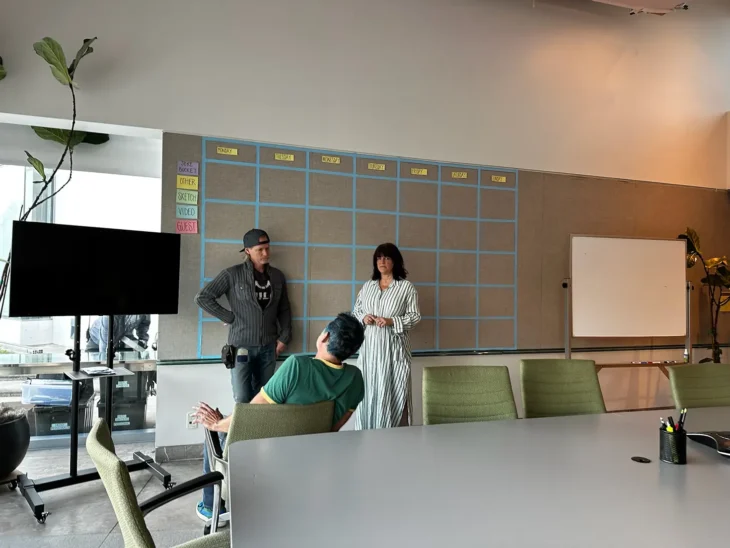

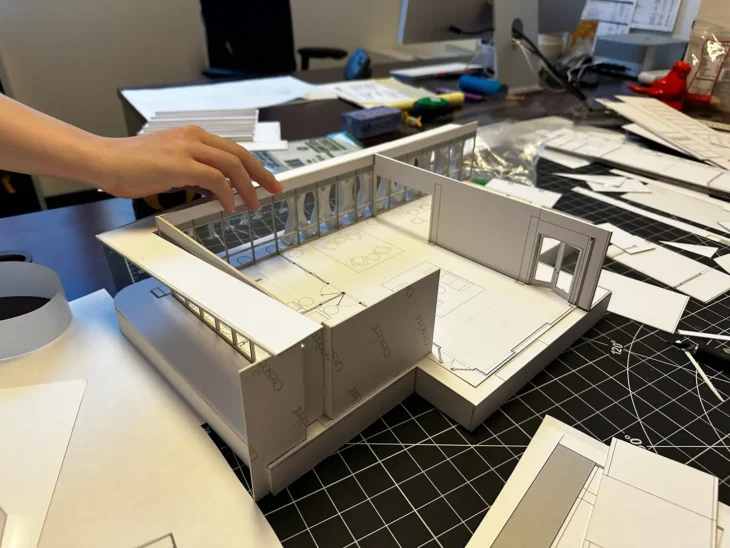
Many set designers are struggling in the current industry climate. What are your thoughts on the challenges facing production designers today, and what changes would you like to see to support the craft? – The fact is, our industry is at a unique inflection point—one we’ve never quite faced before. The media landscape has transformed dramatically in the 20 years I’ve been doing this, and it’s no surprise that film and television are feeling the impact. There’s always been incredible work happening in other cities and countries—I’ve been fortunate to work with talented crews around the world—but nowhere has the infrastructure that Los Angeles has for telling human, character-driven stories with heart.
The depth of our stages, our facilities, and our creative resources is unmatched. It takes a massive machine to make a show; our print shops, our lumber yards, dry cleaners, restaurants, and all the myriad prop houses who have curated a collection of history without parallel. But more than that, it’s the below-the-line workers here—the craftspeople, the crews, the union teams—who form the backbone of this industry. They’re part of what makes Los Angeles a true dream factory. Television is an industrial process, and in many ways, it sits at the very heart of Southern California’s identity.
Seems industry is facing creative challenges as well. AI is becoming a hot topic in creative industries. Do you see a way to incorporate AI into production and set design without compromising the artistry? What are your concerns or hopes for AI’s role in the future of Hollywood? – I can see AI as a kind of research assistant—helping uncover new reference materials, shortcut certain estimates, and manage large volumes of information. Where I can see it being most effective is in organizing data and breaking down complex details into usable parts. I see real value in AI as a compilation of data tool, especially if there were a secure, private way to input scripts, schedules, and other production documents to assist with creative and logistical planning. Anything that reduces the drudgery helps us reclaim time for the art and soul of the work.
So much of how I approach design is rooted in research. I’m constantly searching for new and unusual sources of visual inspiration. One of my personal guidelines is that I avoid using other films as direct references for production design. I deeply admire the work of those who’ve come before me—they motivate and inspire—but their imagery is already a curated response to a different brief, under different conditions. I think of the creative process as a mix of structured research and spontaneous spark.
That’s where I see AI being most useful—not in generating images, which often feel like copies of copies, but in helping uncover original sources I wouldn’t have found on my own. Generative images aren’t interesting to me, they feel like a parlor trick. They lack context, specificity, and texture. What excites me more is using AI’s language capabilities to unearth primary source artists, movements, or obscure references that can fuel the real creative work. A creative search engine, built for creatives. If there were a real path that protected the images that artists create from being stolen, regulation on the way unique work was used, and we address the real environmental impact that AI has, only then can we find gains that feel good.
Hacks premieres every Thursday, with the final Season 4 episode scheduled for May 29th. Streaming on MAX.
Discover more of the exclusive backstage images and production design sketches from Hacks in our gallery:
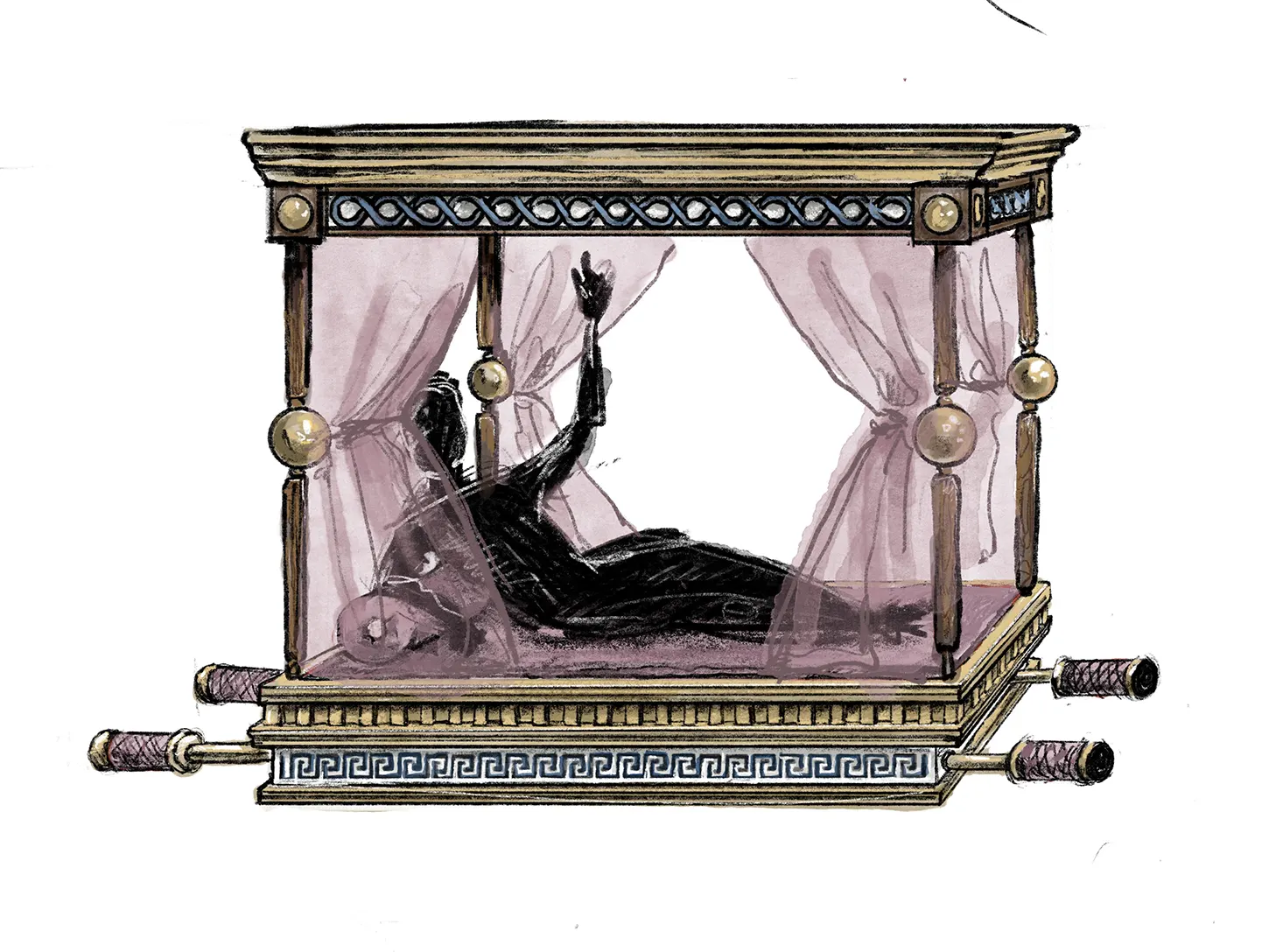
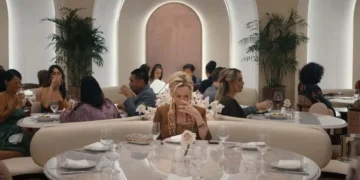













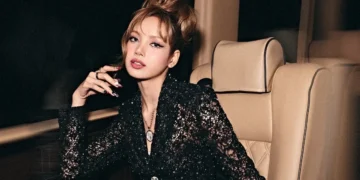
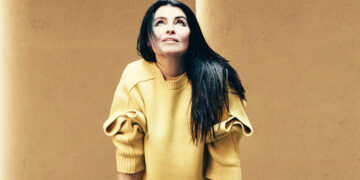
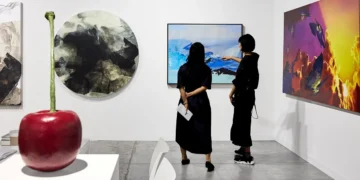
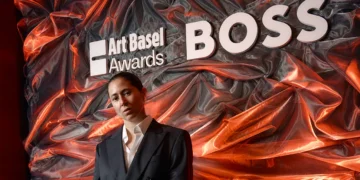
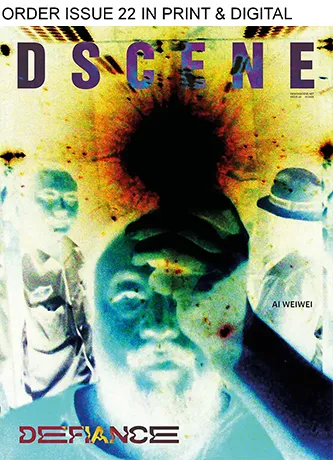

Loving the new season! I do wish really a woman Debrah’s age could get a late night show! It is a shame where we live….